#RealEstate is #BigData
“By 2020, we’ll look back and wonder how we made so many decisions with such little information.” Rossi
This is what’s happening with Big Data Every Minute of Every Day. In the next two years, we’ll create more data than we have generated since the beginning of time.
Charlie Rose interviewed Ginni Rommety, Chairman and CEO of IBM, who said, “UNTIL you refine data like a natural resource, it’s of no good. You watch what happens to electricity, steam, fossil fuel for the 21st Century, it’ll be data. But just like other resources, the benefits go to the people who do something with it, refine it.”
She proclaimed, “Data is the natural resource of the 21st century.”
Change normally happens on one front. For the first time in the history of IBM, they have identified change happening on three fronts simultaneously – Big Data, The Cloud, and The Internet of Things (IoT).
In the 80’s
In the 80’s, I was introduced to SRI, a company that collected data, compiled data, and produced a study profiling the US consumer based on social, economic, and spending habits. The results divided the American market into four groups and multiple subgroups. It was exacting and showed the percentage of these groups not only by state but also by zip codes. It was sold for $300,000 to major corporations. Madison Avenue snapped it up and used it to create successful marketing campaigns.
MAD MEN Re-Invent
We were all vaguely conscious that our credit card purchases were being monitored to identify our buying habits. However, most of us were unaware of how powerful the knowledge derived from this data would be to sellers of products and services.
The ability to tailor a marketing campaign that spoke directly to the individual whose lifestyle fit their product was the pot of gold! Unlike Mad Men who took a product and enticed people to buy it with cleverly written copy and pictures, they began to make products designed for specific market profiles by targeting a specific market for their existing product in the zip codes in which they lived.
Example, when they uncovered that the ‘Belongers’ (an SRI group) never went anywhere without filling the car with friends and family, Chrysler invented the Caravan, aka Mini Van – Target Marketing was born.
25 BIG DATA TERMS EVERYONE SHOULD KNOW
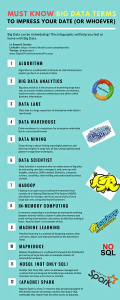
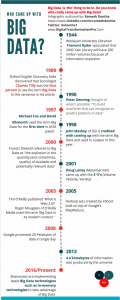
DCP Data Collection Points
As they collected additional data, the targets became more precise. However, the DCP (data collection points) were minimal: IRS, Credit Card Services, and the Census Bureau. Granted, there were tons of data in other areas but it was not normalization. For data to be valuable, it must be normalized.
What does that mean? For instance, there are huge amounts of medical data from multiple hospitals, clinics, doctors’ offices, and insurance companies. Each such institution has multiple names and abbreviations for the same item. They don’t even know what they have. All of this data needs to be standardized; i.e., medical input from all entities using the same item names and/or abbreviations. This is called data normalization. With millions of bits of information needing normalization, you can imagine that it’s a slow and arduous task. Once normalized, the value of data becomes exponential.
REAL ESTATE is Big Data…
In that it’s normalized (3 BR has always been 3 BR) and every part of the real estate transaction is a data collection point. The chaotic chart below demonstrates, not only the complexity of today’s real estate transaction, it also shows the hundreds of points in which data is collected and analyzed.
Everything that can be Digital will be Digital!
Everything that can’t be Digital will become Extremely Valuable!
Data Becomes EXPONENTIAL (X’s X’s X’s)
Technologists understood normalized data from the beginning and, as DCP’s (Data Collection Points) multiply, it becomes exponential like compounding interest! Just look at the amount of data that’s collected every minute in Social Media, 24 hours a day, seven days a week:
Source per minute, 24 hours a day, 7 days a week
Google 4,000,000 Searches
YouTube 300 Hours Uploaded
Facebook 2,500,000 Shares
Twitter 800,000 Tweets
Email 200,000 Sent (75% unopened spam)
Amazon $83,000 In Online Sales
Apple Users 48,000 Apps Downloaded
Pandora 61,300 hours listened to
Add to this texts, cell calls, and photos. This is just a few of the over 800 top Social Media Apps reporting with an excess of 2.4 BILLION USERS! Data has become EXPONENTIAL! Times, times, times, times, times, times…
But Wait, There’s More
The Doctor Is In and in it big time. The fastest growing segment of DCP is health and medicine. Consider that in one’s lifetime, their medical history will be comprised of:
Personal Knowledge 10%
Genomics 20%
Exogenous data 70%
(from your fit bit, your apple watch, what you eat, where you live…)
Enough data to fill 300 million books in one person’s lifetime.
Big Brother is Watching
Hell, we’re all watching! In the 50’s, we called the screen the ‘Boob Tube’. ‘Video Game Addicted’ is what we called kids hooked on gaming, then ‘Computer Addiction’, or ‘Kids Needing Digital Detox’, as games moved into our homes. Now, we are all just known as ‘The Screen Generation’.
The Screen Generation
There are more smart devices in the world today than toothbrushes! We log in countless hours on our smart phones, smart TV’s, and smart watches feeding data through photos, geographic locaters, facial recognition technology, mapping, and Fit Bits!
But Wait, There’s More
No need to implant a chip in you, merely imbed a chip to everything you do, say, and see! It’s called IoT, the Internet of Things.
Automobiles, homes, appliances, wearables, even parking meters are embedded with chips that collect, store, and send data to a Cloud, a BIG, Fat, Fluffy, Full-of-Data Cloud where everything is available for the asking!
Don’t Just Be Data, Use Data
In real estate, you use data and the cloud every day for market analysis, forecasting, client reporting, transaction management, etc. Your MLS is full of data, verifiable data, normalized data, data you can use for client customer identification to promote your business and generate income.
I Already Have a Full Time Job!
You know the value of your time! You cannot be expected to purchase all the data necessary, add it to the data you have, educate yourself on how to define and sort it, learn the algorithmic calculations to read and apply it, then execute a campaign!
Your full time job is to be eyeball to eyeball with people who want to buy and sell or sell your product, not become a data applications manager.
Yet, you don’t want to miss something that will make your life easier.
Find a Marketing Solutions’ Company
Simplify your life by finding an authentic, mobile-friendly marketing solutions’ company that knows, understands, and uses big data. More importantly, one that applies their knowledge to your business to achieve the results YOU WANT. Don’t take their word for it, check their success!
Seven Points to Prove Authenticity
- Their info can be accessed via mobile application. Search them on your mobile device. If it comes up quickly and is easily read, this tells you they are Data Native and Google ready.
- Search their Social Media activity. Check out their Twitter, Facebook, and LinkedIn pages. Are they involving, not just stuck on self-promotion?
- Testimonials – Check to insure they come from people who are in real estate or a similar sales business.
- Contact testimonials personally, not all companies tell the truth.
- Clearly define the outcome you desire and that they understand, can monitor, and monetize results.
- Have a bailout plan. If it’s not working, have a way to release your contract. Good companies stand behind their word and work.
- If it’s working, spend more!
Suggested Companies
I highly recommend you contact ProspectsPlus as they are a leader in efficacious use of BigData in Real Estate Marketing. Here’s their new video using Prizm – They have a Great new Product that efficaciously uses Big Data MARKET DOMINATOR give it a look, I’ll give you a discount.
If you want to be top of mind in REAL ESTATE No Product is better than AdWerx zip code marketing! And their new Internet positioning. I use it with GREAT RESULTS. Use Promo Code Rossi for your discount!
About ROSSI Speaks
If you are interested in hiring Rossi for a Keynote applicable to any industry, contact him on this site or Twitter @RossiSpeaks or TESTIMONIALS or Bio
I’ve added the following article filled with Facts
Innovation and Big Data
I am currently on the topic of analysing trends and knowing customers’ needs even before they know it themselves – as a starting point for innovation. In the previous delivery I looked at two specific “tools” for accomplishing this, namely trend spotting and scenario planning.
We live in the information age / digital revolution / computer era, name it what you want, but what all these terms have in common is that information (in digital format) is available on virtually everything and in gigantic quantities, and this fact has some serious implications for innovation.
Big Data
Big Data is big. I want to stick my neck out and make the statement that “Big Data” has become an even bigger buzzword than “Innovation”. It is insightful, startling and sometimes even downright scary in terms of what is being unveiled of big data and its predicted impact on industry, society and life as we know it.
As usual I want to start with a definition. As with innovation there are many definitions for the “phenomenon” of Big Data, but in my view the one that explains it best is the one from the Oxford Online Dictionary: “Extremely large data sets that may be analysed computationally to reveal patterns, trends, and associations, especially relating to human behaviour and interactions”.
And some history, according to Forbes, the first documented use of the term “Big Data” appeared in a 1997 paper by scientists at NASA, describing the problem they had with visualization (i.e. computer graphics) which “provides an interesting challenge for computer systems: data sets are generally quite large, taxing the capacities of main memory, local disk, and even remote disk. We call this the problem of big data”.
So, in the “beginning” it was about the size of the data sets, now the term encompasses the analysis of these data sets and the value it can provide – in whichever format to whomever. I don’t want to go into the detail of how big data is collected, stored, analysed, privacy and security issues, etc. but to make my point about the impact of Big Data, I want to share a few astounding facts and predictions from Bernard Marr, author of “Big Data”. Every 2 days we create as much information as we did from the beginning of time until 2003. Over 90% of all the data in the world was created in the past 2 years. The amount of data transferred over mobile networks increased by 81% to 1.5 exabytes (1.5 billion gigabytes) per month between 2012 and 2014. Video accounts for 53% of that total. This year, there will be over 1.2 billion smart phones in the world (which are stuffed full of sensors and data collection features), and the growth is predicted to continue. The boom of the Internet of Things will mean that the amount of devices connected to the Internet will rise from about 13 billion today to 50 billion by 2020.
But what does this all mean for your organisation’s innovation efforts? Once again, not an easy answer, and it depends from which perspective you are viewing it – are you exploiting the opportunities that Big Data in itself offers (collecting, storing, analysing, interpreting data) or are you using it to advance your own business? I cannot go into the details of a complete Big Data strategic plan here, but let me give you my opinion on the relationship between Big Data and innovation from a rational point of view, and then you can decide on your own “Big Data for innovation” strategy. A business exists because of its customers. The better you understand your customer’s requirements and the better you can meet these requirements, the more competitive you can become. Your customers leave “digital footprints” of their requirements every day. Don’t you think it makes sense to start tracking these footprints…?
Next Time
The world has become excited about Big Data and advanced analytics not just because the data is big but also because the potential for impact is big, especially for innovation. Next time I will look into the concept of Systems Thinking and its relationship with innovation. I conclude with a quote from sociologist William Bruce Cameron: “Not everything that can be counted counts, and not everything that counts can be counted”.
Want to use BigData for Real Estate click this 

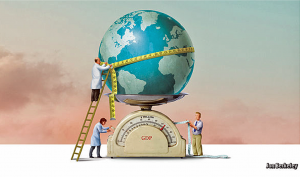
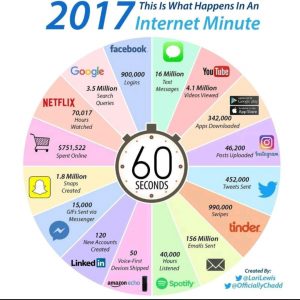
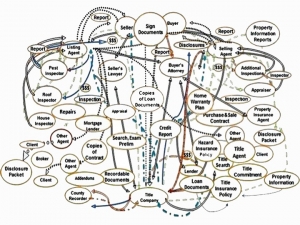
Pingback: REAL ESTATE IS BIG DATA! – ROSSI Speaks